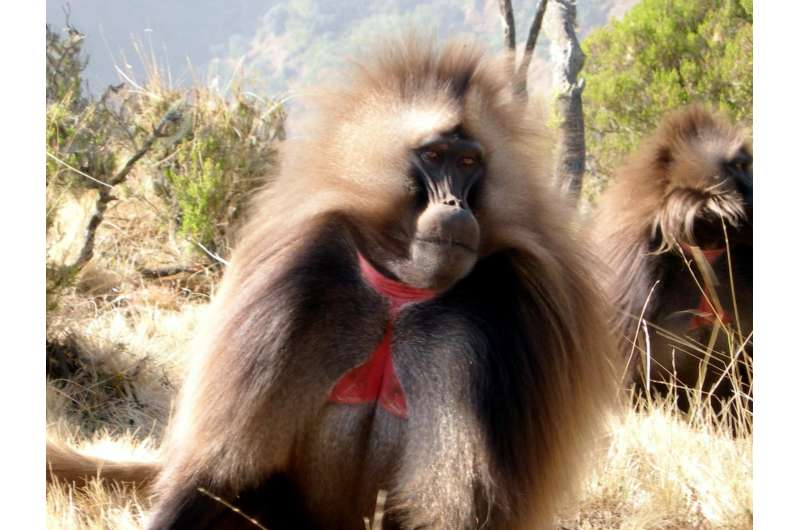Vocal sequences of monkeys and humans follow a common pattern

A new study of geladas – a species of monkey living in the highlands of Ethiopia – has revealed that their long and complex vocal sequences follow a pattern seen in many human languages: the longer the overall sequence, the shorter are the sounds within it. This work not only reveals similarities between our communication system and that of our primate relatives, it may also shed new light on the fundamental organisation of diverse biological systems.
In human language, Menzerath's law states that 'the larger the whole, the smaller the parts'. So, for example, longer words tend to be made up of shorter syllables and longer phrases to be made up of shorter words. The law is named after Paul Menzerath, a Slovak linguist whose ideas have been the seed for decades of research in quantitative linguistics. It is known to hold in a wide range of languages but had never been tested in the vocal communication system of any other species. Now an international team of researchers, led by Morgan Gustison of the University of Michigan and Stuart Semple of the University of Roehampton, has tested this law in geladas, a species in which males produce long sequences of different calls - up to 25 calls in all - made up of six different call types. They analyzed 1065 of these vocal sequences (comprised of 4747 individual calls) recorded from 57 males living in the Sankaber area of the Simien Mountains National Park, Ethiopia.
In agreement with Menzerath's law, they found a negative relationship between the sequence length in terms of the number of calls, and the mean duration of the constituent calls. Calls did not vary in length according to their position in the vocal sequence. Intriguingly, the length of the first calls in sequences was closely related to how long the total sequence was. In other words, sequences started off with calls of the 'appropriate' length for that sequence: short sequences started with long calls, and long sequences started with short calls.
The findings of this work, published in Proceedings of the National Academy of Sciences, not only reveal a basic pattern of sequence structure shared by human and non-human animal communication, but may also have profound implications for our understanding of biological systems more broadly. In addition to their analysis of gelada sequences, the authors of the study also provided formal mathematical support for the idea that Menzerath's law reflects 'compression' – the principle from the field of information theory that relates to minimizing the expected length of a code. Compression provides a means of improving the efficiency of a coding system, and is applied (to save space or memory) in many man-made systems, such as digital images, videos and data storage. Compression also emerges spontaneously in human communication when space is constrained – Twitter being the prime example!
The researchers point out that, in addition to their own findings, patterns consistent with Menzerath's law have already been found to hold at a range of biological levels – in genes, genomes and proteins. They propose, as a result, that compression may underpin biological information systems in a very broad sense – from molecules to animal behaviour to human language.
More information: Gelada vocal sequences follow Menzerath's linguistic law, PNAS, www.pnas.org/cgi/doi/10.1073/pnas.1522072113
Journal information: Proceedings of the National Academy of Sciences
Provided by University of Michigan


















